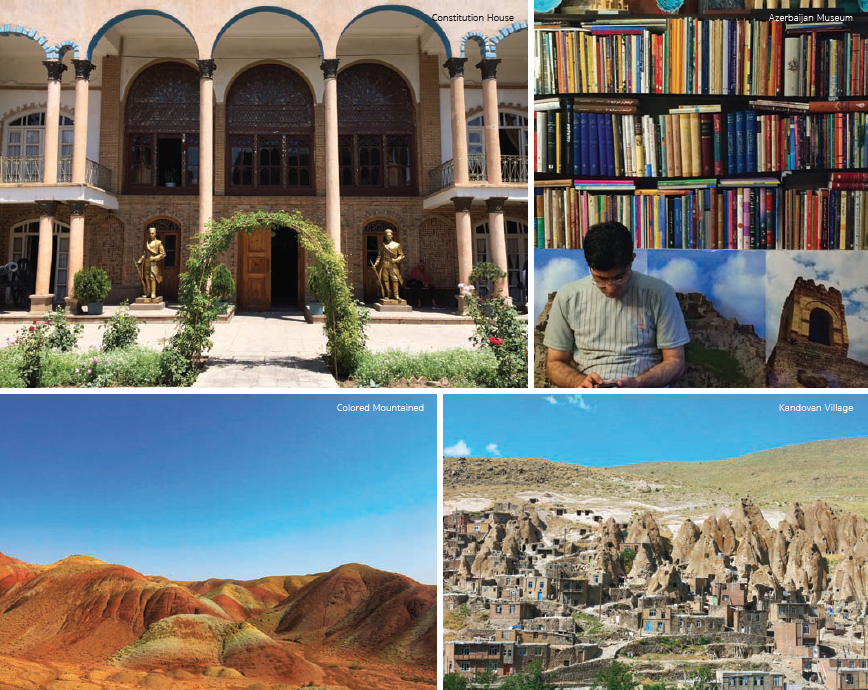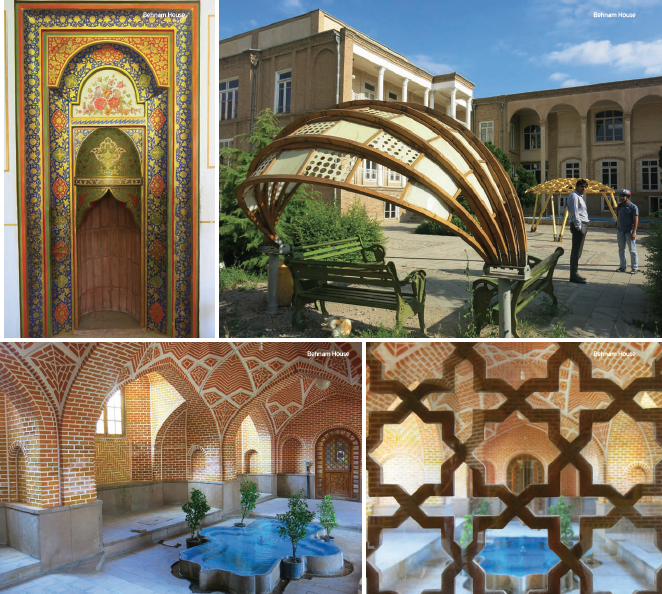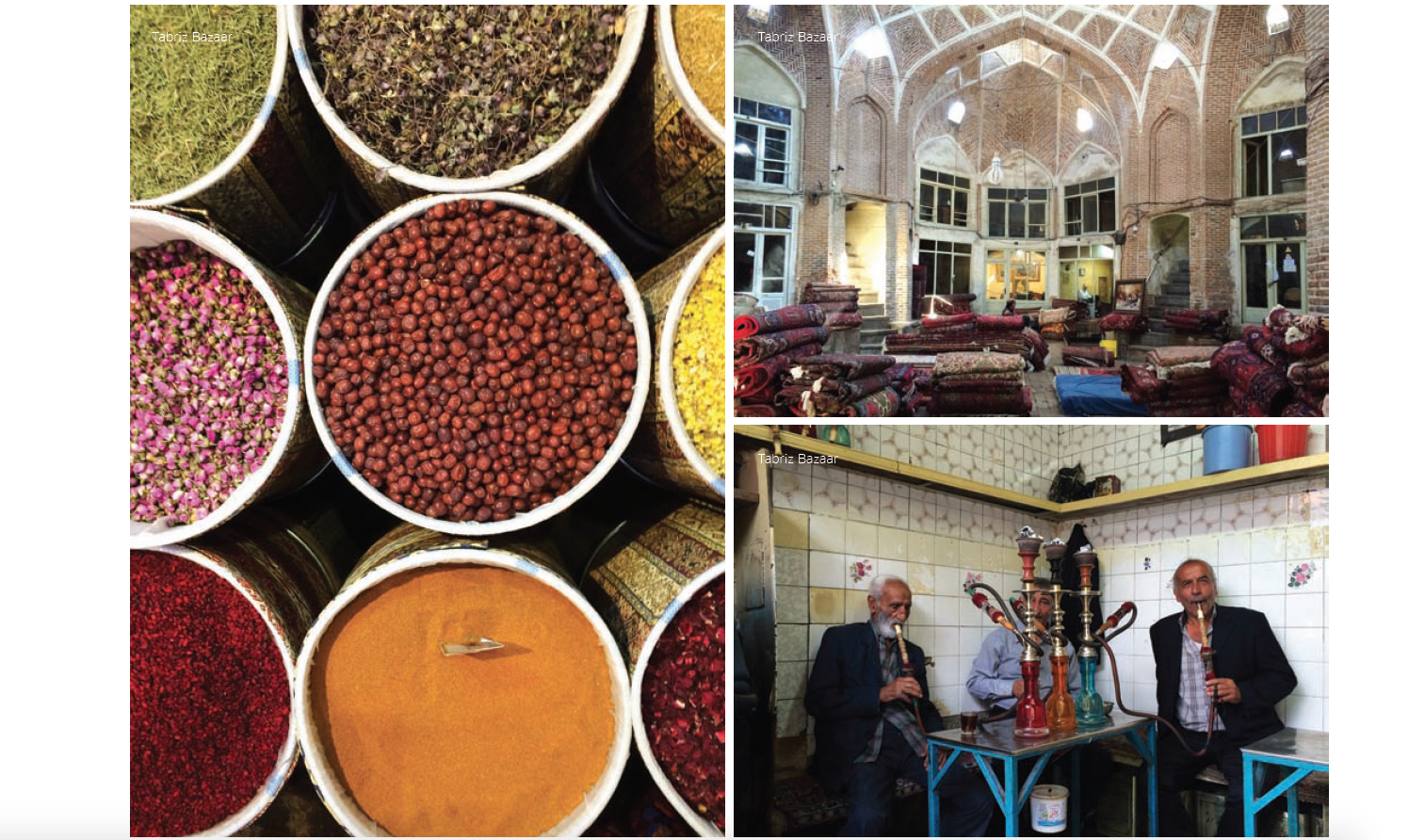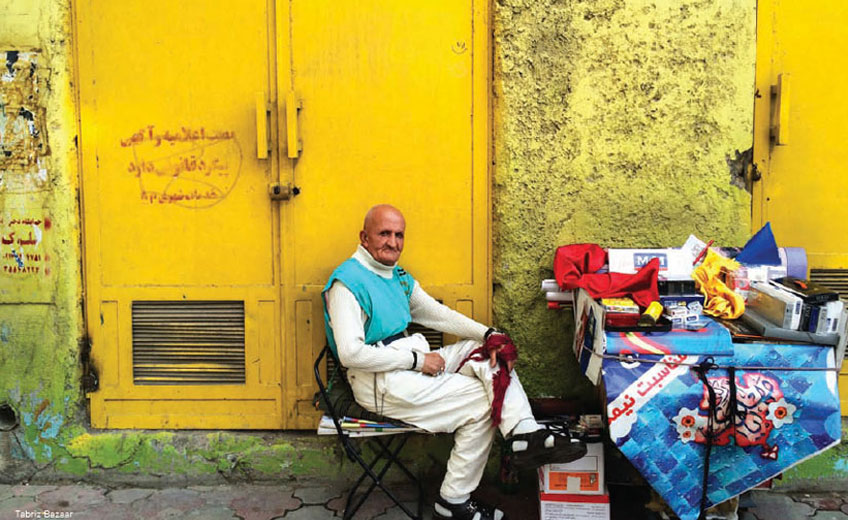Located six hours from Tehran, Tabriz is the jewel of Iran’s northwestern destinations. On the way to Turkey, this Eurasian city with its mesmerizing history and unique way of life and natural landscape guarantees a warm welcome for visitors.
Tabriz has hosted civilization since 1500 BC, as can be seen in its Iron Age Museum. A crucial trade hub on the Silk Road, it saw the first bricks of the main bazaar laid, and developed into a city, in the eighth century. Switching hands from the Arabs to the Georgians, the Mongols, the Ottomans, the Safavids and the Qajars, it was the capital of the historic Azerbaijan kingdom and once even the capital of Persia (modern-day Iran) itself. Though Tabriz was under the influence of different cultures, much of its remarkable architecture was built during the reigns of the Ilkhanate and Turkmen dynasties of the 14th and 15th centuries. The major population has always been the Azari, whose culture, food and language significantly differ from the Persians, as any Azari will affirm.
Tabriz feels like the “breeze” in its final syllable, particularly on arrival from bustling Tehran or hot desert cities like Shiraz or Esfahan. Its description as friendly extends in every direction: a variety of travel attractions, a number of quality accommodations, cool weather compared to other tourist cities and the very warm hospitality of the locals. Though the city shares common characteristics with other Iranian cities and has modern touches to it, the atmosphere is relaxed and streets are generally cleaner.
Tabriz could be mistaken for a Spanish city for its weather and daily schedule. During summer the Tabrizis take their siestas seriously. Business is slow in the afternoon. Streets are packed after 7pm when it is cooler, making it a busy time for restaurants. The locals are getting more familiar with foreigners but still dart curious eyes at you. They are eager to help with even the simplest things like giving directions, which are often followed by familiarizations that lead to home invitations. And this has nothing to do with the government’s preparation of Tabriz as a Tourism Capital of Islamic Countries in 2018.
A self-guided walking tour in the city is an easy affair. Start at Tabriz Bazaar, Iran’s largest covered market. This UNESCO world heritage site is a labyrinth of interlinked and brick-roof domed halls, structures and buildings covering an area of nearly seven square kilometres. Though it was constructed some 1,200 years ago, much of the fine vaultings belong to the 15th century. The market is loosely separated into sections for household goods, clothes, fresh food, nuts and spices, with numerous carpet shops gathered in the centre. The most interesting time is the late morning, but that means you might be walking in the way of hurrying customers and trolley porters – not advised for those averse to crowds. Trying to locate a particular section or shop is nearly mission impossible for first timers.

You are more likely to be lost in a sea of products and if that happens, go with the flow. At the southwestern corner of the bazaar is Jameh Mosque. The brick-roof prayer hall, the mosque’s oldest structure, is supported by octagonal pillars and covered with beautiful plasterwork from the 11th century. Its shady courtyard is a perfect resting spot from the adjacent market. Walking west out of the mosque’s main entrance, you find an alley leading to Rasta Kucha Street across from the Constitution House. A Qajar-era house turned into a museum, it was used as headquarters of the city’s constitutional revolution between 1906 and 1911. Photos and documents are labelled in English and the entrance fee comes with a short briefing about the museum and the revolution in English by museum staff. But unless you are a history buff, the museum is unlikely to be exciting.
On the long Imam Khomeini Road are several attractions side by side. The Kubud (Blue) Mosque, the masterpiece of Tabriz’s 15th-century architecture, was ordered built by Jahan Shah. It took 25 years for the artists to complete the mosaic tiles, delicate hand-painted patterns and calligraphy for which it is nicknamed. Parts of the mosque collapsed in earthquakes in the 18th-century and the new paint is easy to differentiate from the original. Beside the mosque is the excavation site of an ancient graveyard, now the Iron Age Museum. The graveyard was found accidentally during the Blue Mosque’s reconstruction in 1997. Buried in the 38 graves are pottery, jewellery, beads and weapons believed to accompany the deceased into the afterlife.
Fifty metres west of the Blue Mosque, the Azerbaijan Museum has three main halls and a side yard housing antiques and objects collected from excavations in Iran’s Azerbaijan Province. The exhibits include various works of pottery and bronze dating as far back as the fifth millennium BC, Islamic archaeology, coins and seals, and the skeletons of a couple removed from the Iron Age Museum’s graveyard. The basement hosts Tabriz-born and Paris educated Ahad Hossein’s quite disturbing sculptures, allegories of life and war.

The city also has many historic houses restored and brought back into use, one of which is Behnam House, now part of the School of Architecture of Tabriz Art University. The house belongs to the Behnam family, a dynasty of bureaucrats in state service since the beginning of Qajar rule. Probably the finest example of Tabriz’s historic houses, this 18th-century house is embellished with beautiful frescoes and miniature mihrab (a semicircular niche in a wall indicating the qibla, the direction Muslims should face when praying). It has two main structures, the winter and summer buildings, and an inner and outer courtyard. The house is not officially open to the public but staff are happy to let you have a peak inside.
Once done with the city walk, take an excursion to Kandovan, an hour’s drive from Tabriz, where the locals live in caves under volcanic rocks that from a distance resemble a giant termite colony. The rocks are remnants of Mount Sahand eruptions hundreds of years ago. They keep caves cool in summer and warm in winter. The alley stairways and looming rocky cones of the village would make the Flintstones feel at home.
The residents, Azaris who settled in the caves over 800 years ago, are herders, farmers and beekeepers. Most have turned their homes into shops selling local produce such as honey, sheep fat, dried fruits and souvenirs, and handicrafts like wool rugs, scarves and hats. This offbeat village has become touristy yet still feels rustic and the villagers’ lives feel far removed from urban problems. Be considerate when taking photos, as most of the women do not allow you to take photos of them. Some even appear annoyed by the visitors, understandable considering the number of strangers trespassing in their front yards every day.
If you are headed to or coming from Zanjan Province, keep an eye out for the coloured hills along the highway about 100 kilometres from Tabriz. The sandstone and siltstone hills display layers of colours in red, orange, brown and purple if foggy. It is not just a group of hills but a vast landscape of coloured swells rolling away from the highway. Or to be more accurate, the highway cuts into them. There are no nearby tourism facilities but the scenery justifies picnicking or for Iranians even camping on spots along the highway (which tourists should not do for safety reasons).
Whether you are visiting for the first time or the hundredth, Tabriz will impress. It is not yet set up for mass tourism but has much to offer those who delve into its depths.






















































































































































































































































































































































































































































































































































































































































































































































































































